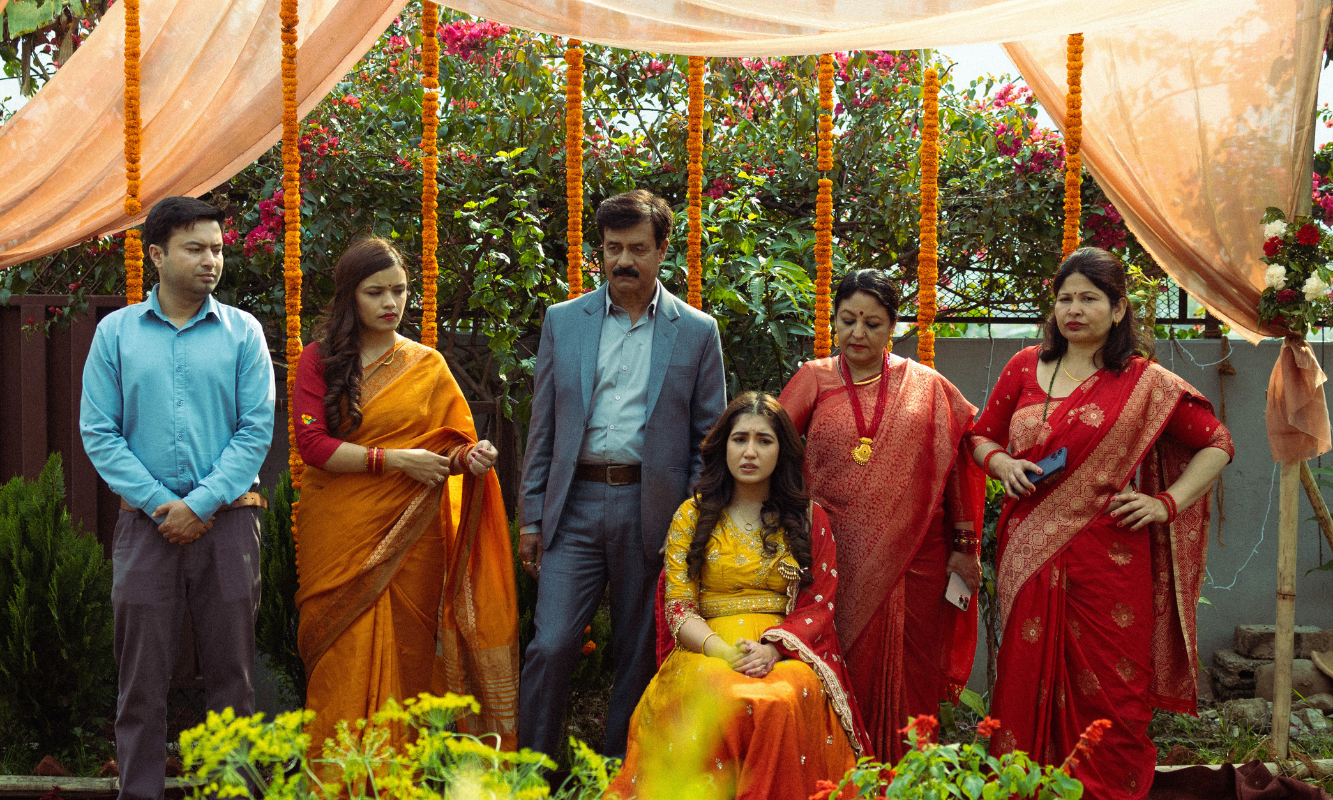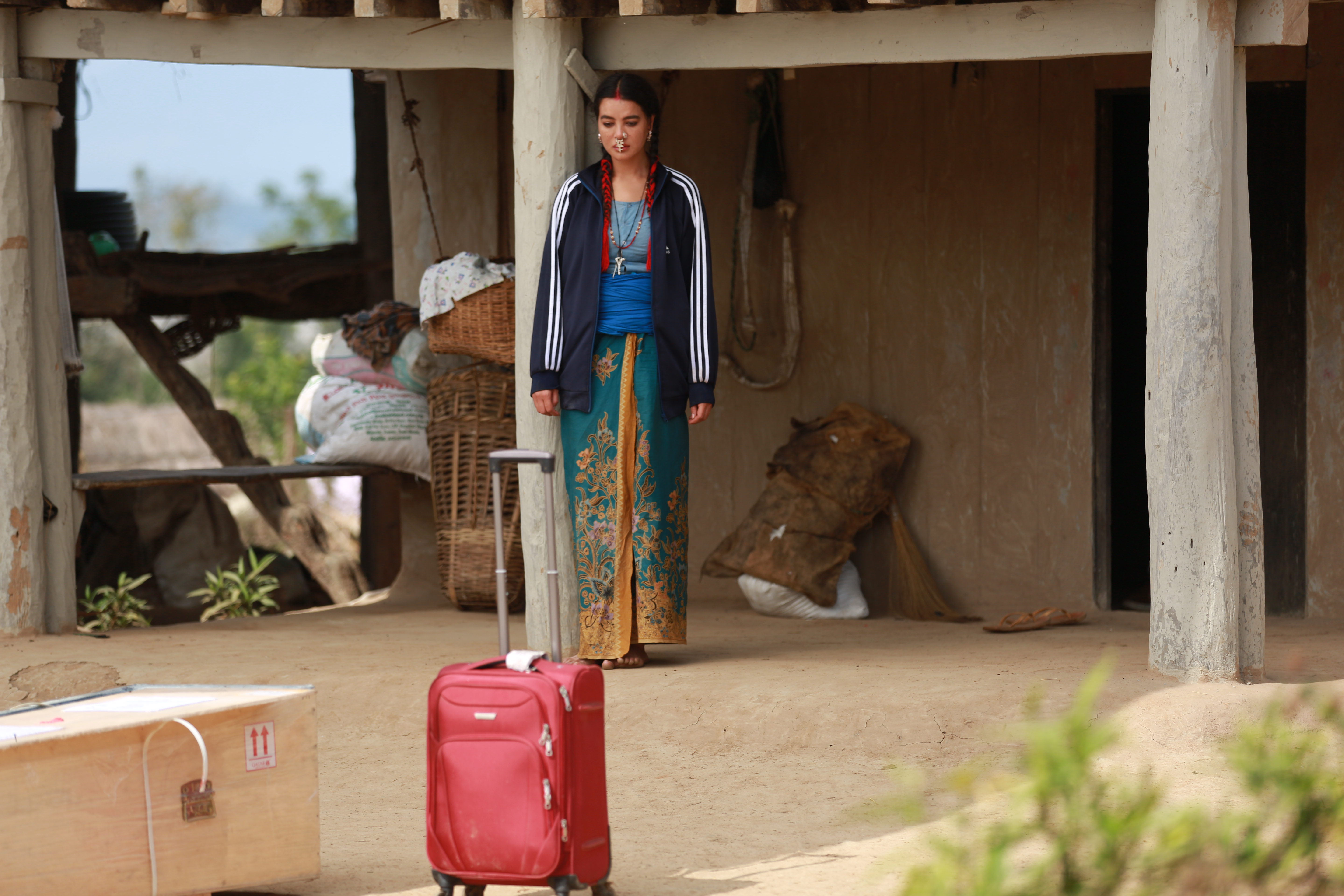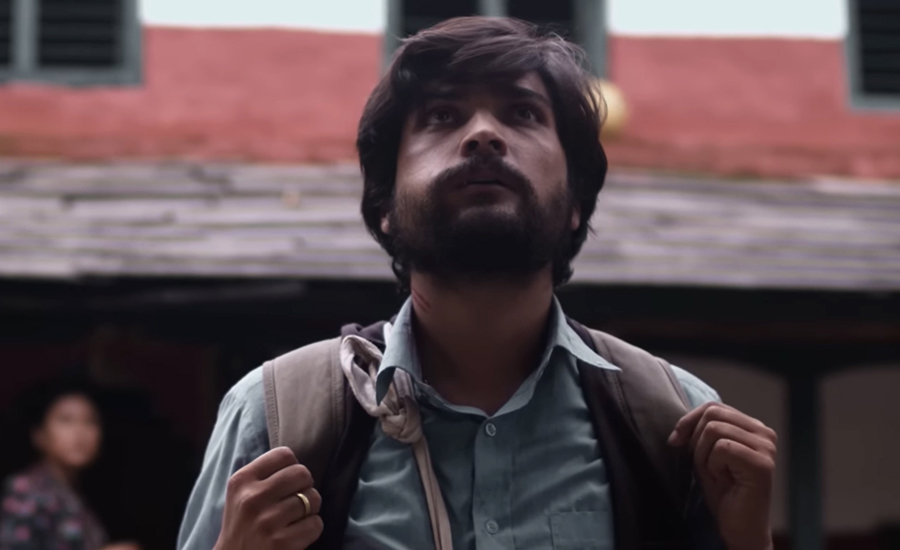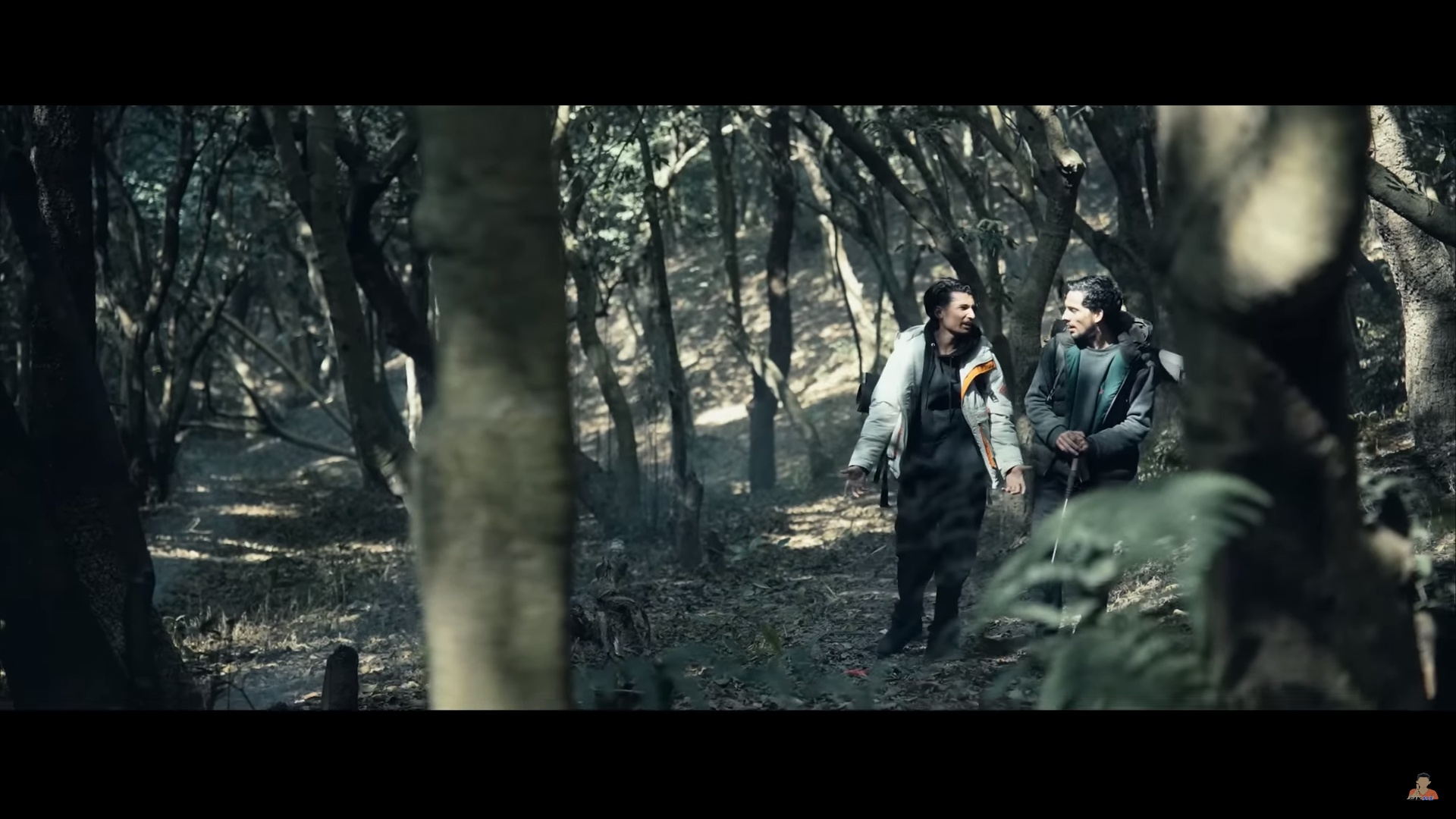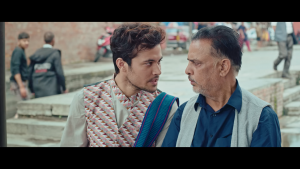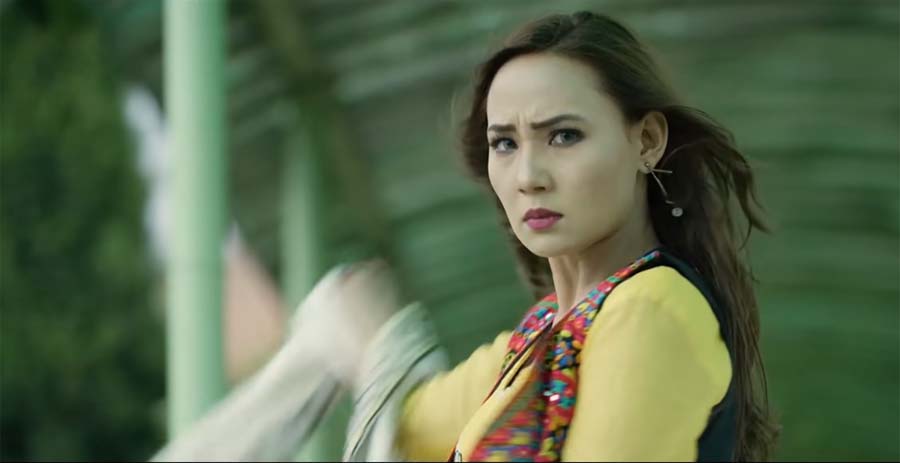
What is a ‘sarauto’ anyway? Arguably, many Nepali cinemagoers of the young generation are not familiar with the term. Making a movie with such a difficult word in the title and featuring a non-star cast is really a risky affair. However, the producers dared to do it and the movie is already on the screen now.
This week’s Kollywood release might exceed your expectations you may have set considering its strange title. Even with the non-star team, debutant director Hari Humagain has done an impressive job.
Raghav Krishna Gautam’s intriguing story and dialogues compensate for the so-so acting and overall presentation of the movie. Despite several flaws, the movie keeps most members of the audience hooked, and it deserves applause as the majority of contemporary Nepali ‘action’ films are boring and unsubstantial.
Action with love story and family drama
First, be clear that Sarauto is not only an action movie; it is also an emotional love story and a family drama. This is the first reason why this movie can offer you something more than what you have expected.
Nepali action movies have not received good reviews in the past. They are found to be imitating Bollywood action patterns, but failing to meet the standard. Sarauto might not be any exception.
However, the action is not the only thing that you can look forward to in this movie. It also has a beautiful, though tragic, love story, and heightened family conflict. These elements enable the movie to appeal to different groups of the audience, for different reasons.
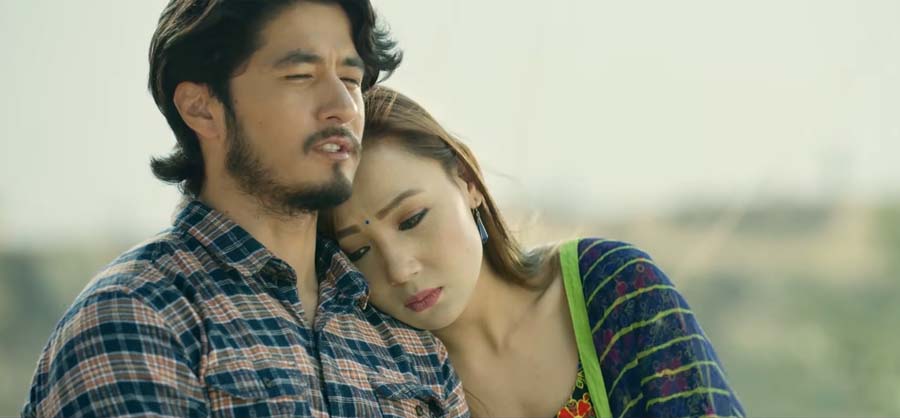
Sarauto’s love story is unique. The way that the heroine (Sumi Moktan) and the hero (Sunny Singh) meet is quite common, but the way they develop their intimacy is arguably peculiar. (Further description of this ‘way’ could be a spoiler!) Like other love story movies, this film also includes a couple of songs. However, the songs essentially do not contribute anything to the overall impact of the movie.
The movie also offers you an emotionally-charged family drama. This is not as beautiful as the love story, because it has a bias. The movie reinforces a prejudiced idea about adopted children of the family (again, a further description of this argument should not be revealed here). But, notwithstanding the bias, the drama is worth watching.
This film obviously includes other regular components of an action movie: revenge, betrayal, fight, and bloodsheds. If you love foreign action movies and want to see how Nepali filmmakers are also learning tricks of the genre, go watch it and judge on your own.
Cinematic presentation
Because the movie’s director is an experienced cinematographer, the movie’s visual language clearly communicates its message. As the plot moves between the past and the present, several flashback scenes are included in the movie. The chronological (present) and flashback (past) scenes have been effectively connected into a sequence hence there is not much confusion.
Nevertheless, a few incidents from the past–for example, the heroine’s conversation with her dad about ‘the greatest thing in life’–are repeated many times, and it might force the audience to lose their interest. Likewise, some flashback scenes, for example Jeetjung (Leo Tank) narrating his past and his transformation into a villain, are too quick.
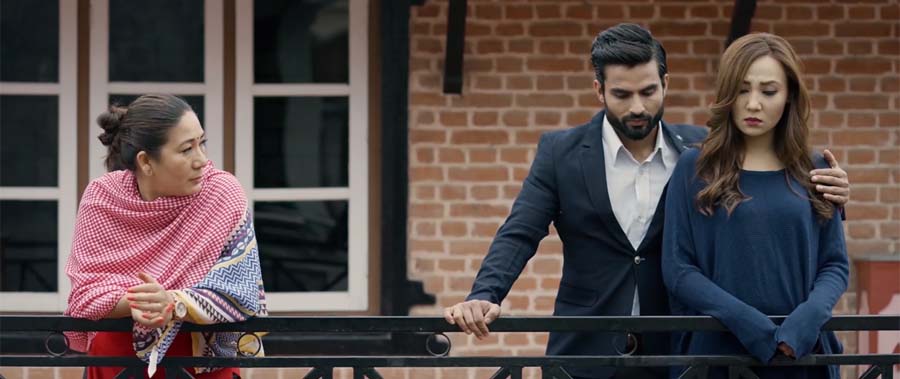
Moreover, the first half of the movie baffles you. You see three parallel storylines. All of them merge into the one some minutes before the intermission. Because you can easily understand the development of events since then, the plot can become more interesting.
The writer and the director have tried to make some scenes symbolic, but they do not work much effectively. In the movie’s trailer, you can see the hero expressing a metaphor of rivers and bridges about human separations and connections. This does not appeal much as it is already used too much.
The biggest symbols used in the movie are the ‘sarauto’ an ‘Om’-sign locket. The sarauto symbolism is quite clear, neither is it problematic for the tool is associated with the antagonist forces. But there is a big problem with the Om locket. Because the sign is a common symbol of Hinduism, the movie using it to refer to the villain is offensive and insensitive to the biggest religious group of the country.
Acting
As the lead, Sumi Moktan has done a nice job. Her acting is not perfect, but she has left an impression and shown the potential of further development in the field. Her male counterpart, Sunny Singh is also commendable. He is cool, gentle and handsome as demanded by his role. He has been seen natural all the time, even when he acts drinking, and it is his biggest strength. Parakram PJB Rana as the hero’s confidant has also proved his capacity in acting. In his debuting project, Leo Tank (Tanka Dhamala) has also made since efforts to act alive though at times his acting looks immature and artificial. He, of course, has space for improvement, but he must have caught other directors’ eye for a villain’s role in the future. Sampada Dahal cannot shine much.
Among the artists playing supporting roles, Aruna Karki and Vijaya Lama’s performance is memorable. However, it is not only because of their long experiences, but also due to the positive roles they are given. Dhiren Shakya and Yubaraj Lama are average.
Verdict
Though promoted as an action movie, Sarauto’s story is more appealing than the action. It deserves your two hours and a quarter, plus a ticket of a few hundred rupees.
—
Sarauto
Runtime: 135 minutes
Genre: Action, love story, drama
Director: Hari Humagain
Screenwriter: Raghav Krishna Gautam
Cast: Sumi Moktan, Vijaya Lama, Yuvraj Lama, Sunny Singh, Amir Gautam, Leo Tank, Sampada Dahal, Dhiren Shakya, Aruna Karki, Parakram PJB Rana
3/5






